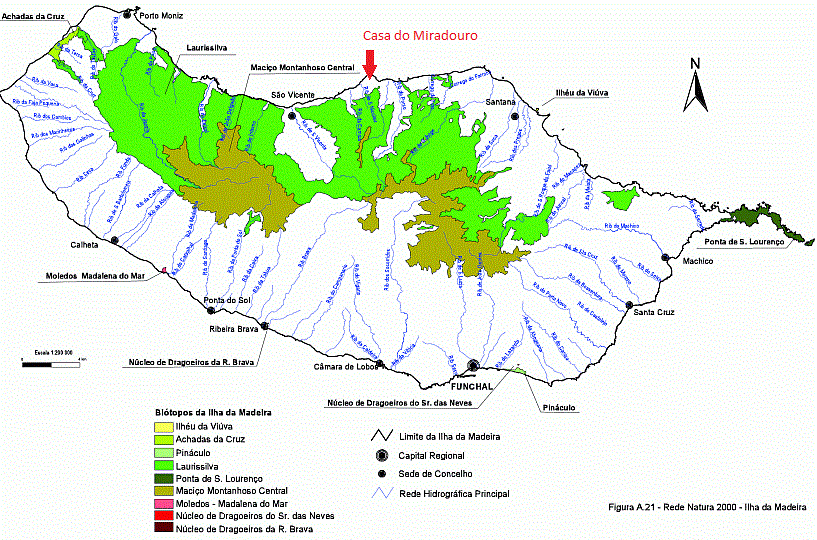The Laurisilva Forest
What to expect from the laurel forest
The Laurisilva or laurel forest of Madeira is a true garden of Eden. Visiting it is much like traveling back 3 million years to a typical Western European forest. On the whole, that’s because the laurel forest is an outstanding relict of a previously widespread laurel forest type. Interestingly, it is the largest surviving area of laurel forest and scientists believe it to be 90% primary forest. It contains a unique suite of plants and animals.
Most of the forest has likely never been felled. Consequently, there are some old massive trees which have been growing since well before the discovery of the island.
Species of the laurel forest
The predominant endemic trees belong to the Lauraceae family. That family includes species such as Til Ocotea foetens, which’s fruits look like little acorns. On the stems and leaves the nerves are clearly visible. Laurel Laurus novocanariensis is frequently accompanied by fungi known as madre-de-louro.
Hence, water is constantly present in the Laurisilva Forest, it is also known as the “water producing forest”. The multiple components of the ecosystem including species which collect water from mist and vertical precipitation. This contributes to a hydrological balance. That balance is essential to life on the Island.
The BBC made a wonderful documentary about the Madeira Laurisilva. The visit starts about 3 minutes into the documentary.
Natures Wonderlands Islands Of Evolution S01E03 – Madeira: Island Ark from Filipe Silva on Vimeo.
Hiking through the laurel forest
Furthermore, to explore the laurisilva, it is best to hike along one of the levada trails which pass straight through it.
Hence, here are some of the most beautiful levada trails (only those accessing the Laurel forest):
– Levada do Rei (King’s Levada): this is official walk PR18, takes about 3-3.5hours,
– Levada das 25 Fontes/Levada do Risco: official walk 6 and 6.1, takes about 3 hours
You can access the Laurisilva forest from the neighboring municipalities; Sao Vicente, Porto Moniz, and Santana. The three municipalities realized the nice video below to promote the laurisilva.
Unfortunately, the laurisilva is under permanent threat of invasive species and forest fires. Hence, the map below shows where you can still find intact laurisilva forest. Furthermore, most of it is located on the North Coast of the island.
